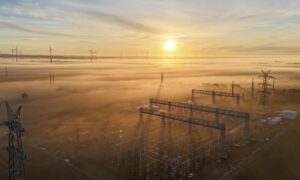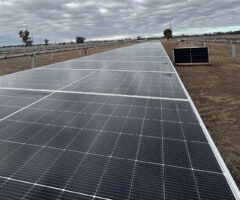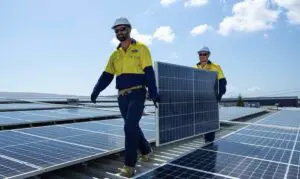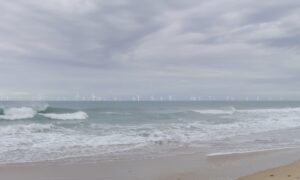Australia’s main grid reached a record renewable share of more than 47 per cent in the month of October, while South Australia delivered a wind and solar share equivalent to 85.2 per cent of state demand.
Spring is usually the strongest season for wind and solar – due to the good conditions for generation and the relatively low demand, – although it can also result in high levels of curtailment due to the number of negative wholesale price trading intervals.
But in October, despite the moderate pace of new fully commissioned wind and solar plants over the last 12 months, the share of renewables hit a new high.
According to OpenNEM, the share for the month was 47.4 per cent, beating the 45.4 per cent recorded in September and the 45.2 per cent in October last year.
Wind and solar alone accounted for 39.7 per cent, up from 38.1 per cent in the same month a year ago. Notably, the biggest contribution came from rooftop solar PV with a 16.8 per cent share of NEM (National Electricity Market) demand in the month.
(The graph at the top shows the output on the main grid for the past seven days, with a renewable share of 47.5 per cent. The pattern is clear).
Other data providers came up with a slightly different number for the renewable share in October. Rystad Energy put it at 47.6 per cent and agreed it is a monthly record.

Rystad’s David Dixon also noted it was the highest month of renewables generation on record (rooftop solar, utility solar, wind, hydro, biomass) with a total of 8.13 TWh, the first time it has exceeded 8 TWh in a month.
The best performing individual state was Tasmania, with an average share of 100.9 per cent over the month from renewables, most of it (72.9 per cent) from hydro.
In terms of variable renewables, South Australia led the way with an 85.2 per cent share of state demand – entirely from wind and solar. That’s not actually a record, however, as the state recorded an 86.9 per cent share in the same month last year.
Victoria came next with a 51.5 per cent renewable share for the month, with the country’s most coal dependent states NSW and Queensland coming in with 40.4 per cent and 35.6 per cent respectively. Both Victoria and Queensland posted new monthly records in terms of generation, according to Rystad.
Western Australia, which operates on a separate grid and with a different market system, which means it cannot export surplus power or import when needed, recorded a renewable share of 41.7 per cent for the month.
Click here for a list of the best performing wind and solar farms in the month.
The share of renewables has grown only moderately over the last 12 to 18 months, but the pace is expected to quicken with a number of big new projects – including the two biggest wind farms to be built in Australia – currently going through the commissioning process.
The Australian Energy Market Operator also says that the number of projects seeking connection approvals, and those going through various stages of construction and commissioning, is now at a record 45 gigawatts (GW).
Rystad’s Dixon says there is more than 7 GW of utility solar and wind at various stages of construction and commissioning, and this will add approximately 17 TWh/year of renewables generation.
He also says more than 5 GW of utility batteries at various stages of construction and commissioning, which will shift more load to higher renewables periods of the day. And, he notes, consumers are still installing rooftop solar at rapid rates (up to 3 GW a year).
This month, the Australian federal government will kick off the second of a series of 6 GW tenders for new wind and solar, with the results of the first tender also expected in November or early December.
See also: Australia’s best performing wind and solar farms in October








